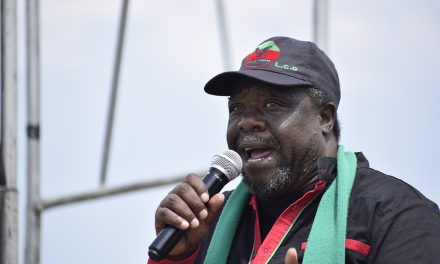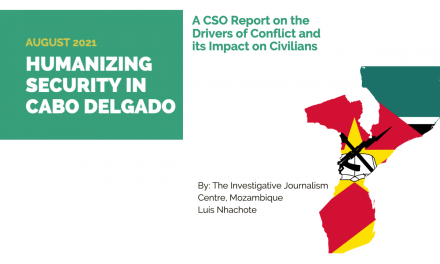Access to energy is a priority of Zimbabwe’s National Development Strategy (NDS1) for economic growth, which envisages a prosperous upper-middle-income society by 2030. This strategy envisions gross national income per capita at more than US$5 000 in real terms by 2030, with electricity highlighted as one of the major economic growth enablers.
Under the strategy, the priority is not only the development of reliable, adequate, low-priced electricity but increased household access, from 52.2% in 2017 to 72% in 2030. But the country continues to experience significant electricity shortages, partly because of obsolete infrastructure and vandalism, as well as growth in demand. Access to electricity has grown from 32.3% of the population in 2014 to 52.75% in 2020, according to the World Bank. By contrast, Kenyans’ access to electricity has grown from 36% to 71% over the same period.
There is also a huge rural-urban electricity access divide in Zimbabwe, with only 37% of the rural population having electricity in 2020. This figure has probably deteriorated since then. The government embarked on the Rural Electrification Programme in 1983. This initially targeted growth points or development service centres in rural areas but was expanded to countrywide rural electrification, with dedicated funding through a rural electrification levy. Although progress has been made, country-wide rural electrification is yet to be realised.
The global transition from fossil fuels to clean energy sources, to which Zimbabwe has committed, is an opportunity for the country to reach these development goals. By tapping into its solar energy potential Zimbabwe can “leapfrog” its presently excluded rural constituency into a clean and sustainable energy future. The concept of “leapfrogging”, as defined by Richard Perkins, of the London School of Economics and Political Science, is when nations skip conventional economic growth stages by adopting contemporary resource-efficient technologies to reduce post-consumption repercussions such as pollution.
Greater emphasis on renewable energy sources will also help Zimbabwe to offset major long-term risks associated with investing in coal, a fuel source that not only has deleterious effects on Zimbabwe’s environment and ecotourism sector but may see reduced global demand in the coming years. Any investments into coal risk becoming stranded assets in the near future. The Zimbabwe Electricity Transmission and Distribution Company registered improved power supplies in June. Citizens acknowledged a reduction in black-outs, with some citing an “unusual” experience of at least a week of consecutive days of power supply.
This development has been attributed to the rising water levels in the Zambezi, given its hydropower generation, as well as expansion at the Hwange power station. Zimbabwe’s energy sources are a mix of hydropower (70%), coal (29%) and renewables (1%). The country’s major hydropower station is the Kariba South hydroelectric power station. The country also has thermal power stations in Bulawayo, Harare, Hwange and Munyati. The Hwange power station is the largest coal-fired plant in the country (originally 920 megawatts).
The energy sector contributes about 49% to the country’s total greenhouse gas emissions. With part of the rural populace still off the grid and electricity demand on the increase, there is an opportunity to leverage the country’s high solar energy potential. Through its nationally determined contributions, Zimbabwe has articulated a commitment to the decarbonisation agenda and reducing its greenhouse gas emissions. But ongoing investments in coal, particularly by Chinese companies, means that coal will remain central to the country’s energy mix. The NDS1 notes that Zimbabwe has vast coal deposits and five coal-to-coke processing plants.
The country envisages job creation and generating revenue from the export of coal, coke and coke products and has plans to establish more coal-to-coke processing plants during the NDS1 2021-25 period. One of the NDS1 strategies in establishing coal-to-coke processing plants is the expedition of the establishment of coke oven batteries through the provision of land and expediting the processing of mining title applications. The country’s ongoing investments in coal mining run contrary to its 2015 Paris Agreement commitments and the global energy transition agenda.
The NDS1 calls for multi-stake-holder partnerships to enable the exploitation of the country’s coal bed methane gas resources, which are the largest in the region. With 85% funding from China’s Sinohydro to the tune of $1.4 billion, the Hwange thermal power station is undergoing expansion to 920 megawatts through two additional 300MW units. One of the new 300MW coal-fired power generating units started feeding electricity into the national grid in March. The second one is expected to be generating power in October. But continuing to invest in fossil fuel infrastructure, while seemingly attractive in the short-term, risks huge long-term losses.
The International Energy Agency cautions that although there has been a peak in coal use in 2022, mainly a result of Russia’s war in Ukraine, in 2025 “growth in renewables will supply the lion’s share of additional power demand, with coal and gas filling the remaining modest gap”.Despite these investments in thermal energy, more than 60% of the population still has no access to clean energy sources. Given the problems of obsolete infrastructure and the heightening water scarcity, the country’s largely thermal and hydropower mix has no capacity to meet the needs of its excluded rural constituency. Renewable, clean solar energy offers an effective opportunity.
A 2018 study by Massachusetts Institute of Technology scholars Goksin Kavlak, James McNerney and Jessika Trancik, evaluating the causes of cost reduction in photo-voltaic modules from 1980 to 2012, indicates that costs had fallen by 97%. The study also notes that government policy to help grow markets around the world also played a critical role in reducing costs. The continuing reduction in costs and Zimbabwe’s ideal environment for solar energy production is an opportunity to expand the rural electrification programme.
This will be an important step in fulfilling both the NDS 1 vision of access to modern energy by targeting the larger part of the populace. It will also set the country on the path to its commitment to a 33% reduction of greenhouse gas emissions by 2030. One of the important aspects of NDS1 is the government’s commitment to enable independent power producers access to the country’s electricity market. A good example is the Old Mutual Solar Project partnership. The Old Mutual Investment Group Zimbabwe is investing $21.5 million into independent power producer Centragrid to support the production of 25MW of solar power for the national grid.
Such partnerships are key to addressing what is often one of the major hurdles in policy implementation: funding. Partnerships between the government and independent power producers can be a game changer in exploiting the country’s vast solar energy resources for the benefit of the already excluded rural constituency.
- This article first appeared in Mail & Guardian on 30 June 2023.
Sikhululekile Mashingaidze entered the governance field in Zimbabwe while she was a part-time enumerator for the Mass Public Opinion Institute’s diversity of research projects during her undergraduate years. She has worked with the Habakkuk Trust, Centre for Conflict Resolution (CCR-Kenya), Mercy Corps Zimbabwe and Action Aid International Zimbabwe, respectively.







